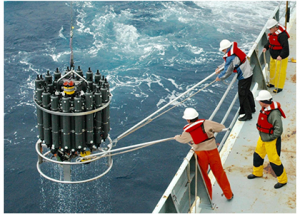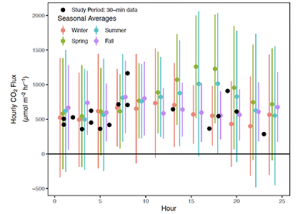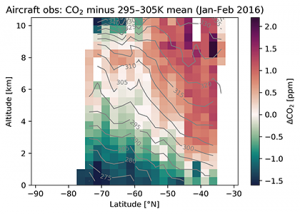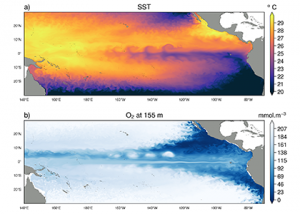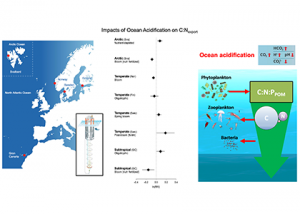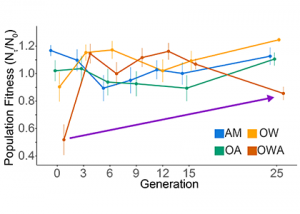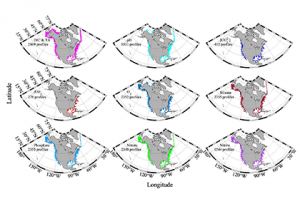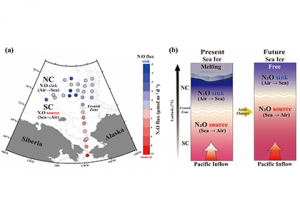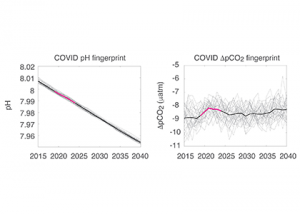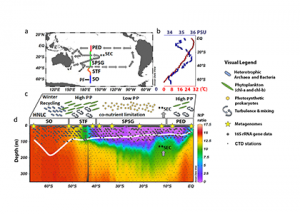If you would like to have your recent publications featured on the OCB website please contact ocb_news@whoi.edu. View our guidelines for writing a New OCB Research post.
Effective data management is paramount in oceanographic research. The ocean is a global system, and research to understand regional and global oceanographic processes often involves compiling cruise-based data from different laboratories and expeditions. The new international data standard covers column header abbreviations, quality control flags, missing value indicators, and standardized calculation of numerous parameters. Released […]
Read MoreCoastal management actions aimed at protecting or restoring seagrass meadows are often assumed to have the collateral benefit of removing large amounts of carbon dioxide from the atmosphere to combat climate change. Be aware, however: not all seagrass meadows are alike. Under certain conditions, some release more carbon dioxide than they absorb and are net carbon sources to the atmosphere. This is now shown […]
Read MoreThe Southern Ocean is indeed a significant carbon sink—absorbing a large amount of the excess carbon dioxide emitted into the atmosphere by human activities—according to a newly published study led by the National Center for Atmospheric Research (NCAR). The findings provide clarity about the role the icy waters surrounding Antarctica play in buffering the impact […]
Read MoreAs the ocean warms, the future of the tropical Pacific Oxygen Minimum Zones (OMZs) remains highly uncertain, in part due to incomplete understanding of processes and poor model representation of how mesoscale circulation impacts ocean biogeochemistry. To help address these gaps, a recent paper explored how mesoscale eddies modulate dissolved oxygen distributions and variability, with a particular focus on the upper northern […]
Read MoreMarine food webs and biogeochemical cycles react sensitively to increases in carbon dioxide (CO2) and associated ocean acidification, but the effects are far more complex than previously thought. A comprehensive study published in Nature Climate Change by a team of researchers from GEOMAR dove deep into the impacts of ocean acidification on marine biota and […]
Read MoreA key issue facing ocean global change scientists is predicting the fate of biota under the combined effects of ocean warming and acidification (OWA). In addition to the constraints of studying multifactor drivers, predictions are hampered by few evolutionary studies, especially for animal populations. Evolutionary studies are essential to assess the possibility of evolutionary rescue […]
Read MoreCoastal ecosystems are hotspots for commercial and recreational fisheries, and aquaculture industries that are susceptible to change or economic loss due to ocean acidification. These coastal ecosystems support about 90% of the global fisheries yield and 80% of the known marine fish species, and sustain ecosystem services worth $27.7 Trillion globally (a number larger than […]
Read MoreDuring the western Arctic summer season both physical and biogeochemical features differ with latitude between the Bering Strait and Chukchi Borderland. The southern region (Bering Strait to the Chukchi Shelf) is relatively warm, saline, and eutrophic, due to the intrusion of Pacific waters that bring heat and nutrients in to the western Arctic Ocean (WAO). […]
Read MoreThe global pandemic of the last nearly two years has affected all of us on a daily and long-term basis. Our planet is not exempt from these impacts. Can we see a signal of COVID-related CO2 emissions reductions in the ocean? In a recent study, Lovenduski et al. apply detection and attribution analysis to output […]
Read MoreUnravelling the relationship between biological diversity and ecosystem functions is a timeless question which dates back to the expeditions of Alexander von Humboldt in the early 1800′. At the base of the marine foodweb, marine prokaryotes are essential for ecosystem functioning. Measuring their biogeography and functional traits therefore merits investigation as alterations in their alpha […]
Read More
